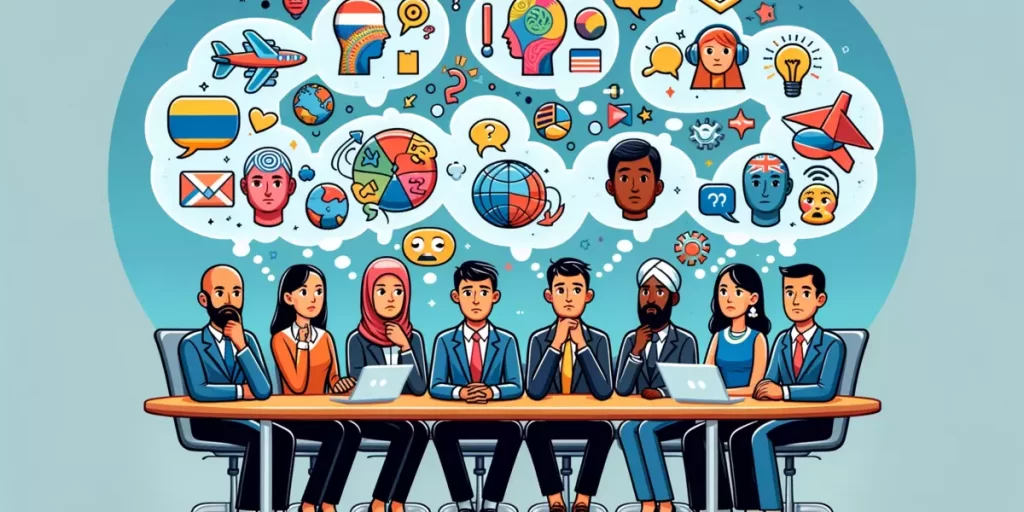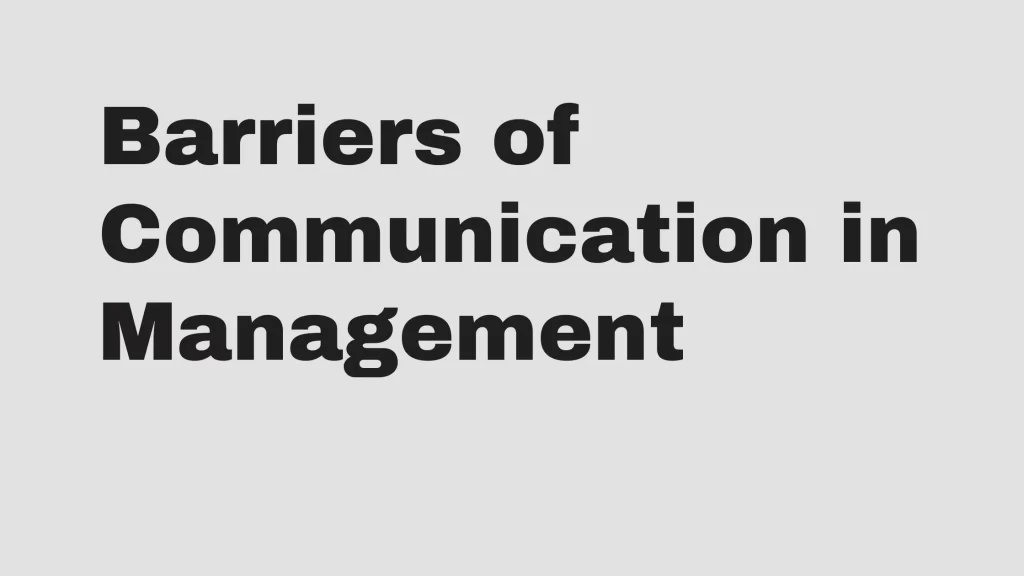In today’s dynamic business environment, effective communication within an organization is pivotal for success. However, several barriers can impede this process, affecting organizational performance and culture. This blog post explores these barriers and offers strategies to overcome them.
Contents
Understanding Organizational Barriers
Organizational barriers refer to obstacles that hinder the flow of communication within an organization. These barriers can prevent clear and effective communication, often leading to misunderstandings and misinterpretations. They may arise from the organizational structure, the nature of the roles and responsibilities, or even the personal communication styles of employees.
Organizational barriers to communication
Organizational barriers to communication refer to challenges that hinder effective communication within an organization. These include:
Hierarchical Structure
Tall organizational structures can complicate the flow of information. Messages may be altered or delayed as they pass through multiple levels. Organizations can address this by flattening structures and establishing direct communication channels.

Lack of Clarity
Ambiguity in communication is a major barrier in many organizations. Lack of clarity can occur due to poorly conveyed instructions, complex language, or uncertain directives. When employees receive ambiguous information, it often leads to confusion, errors, and inefficiency.
This barrier can be overcome by ensuring that all communication is clear, concise, and direct. It’s crucial for managers and leaders to provide unambiguous instructions and feedback and to encourage employees to seek clarification whenever necessary.
Information Overload
In today’s information-rich environment, employees often face the challenge of information overload. Excessive emails, reports, and messages can overwhelm individuals, making it difficult for them to process and understand the essential data. This barrier can lead to important information being missed or ignored.
To mitigate information overload, organizations can implement effective information management systems, prioritize communications, and train employees in skills like speed reading and data analysis.
Physical Separation
In increasingly global and remote work environments, the physical separation of employees across different locations can hinder effective communication. Geographical dispersal can limit face-to-face interactions, which are often crucial for building relationships and ensuring clear communication.
To address this barrier, organizations can leverage technology such as video conferencing and collaborative online tools to simulate face-to-face interactions and maintain regular communication.
To learn more about barriers of communication check out my following posts. Mechanical Barriers to Communication and Jargon Barriers to Communication.
Cultural Differences
In diverse workplaces, cultural differences can lead to communication barriers. Different cultural backgrounds mean that employees bring varied communication styles, behaviors, and expectations to the workplace. Misunderstandings can arise if cultural cues and norms are not well understood or respected.

Overcoming this barrier involves promoting cultural awareness and sensitivity training, encouraging open-mindedness, and fostering an inclusive environment where diverse perspectives are valued.
Lack of Trust and Openness
A lack of trust and openness within an organization can significantly hinder communication. If employees feel insecure or perceive a lack of transparency from management, they may be reluctant to share information, ideas, or concerns. This barrier can lead to withholding of key information, reducing the effectiveness of decision-making and problem-solving processes.
Building trust and openness requires consistent, honest communication from leadership, the establishment of a safe environment for sharing, and the cultivation of strong relationships based on mutual respect and understanding.
Overcoming these barriers requires clear guidelines, open dialogue, efficient technology use, regular feedback, and fostering a culture of trust and respect.
Personal Anecdote
Consider Alex, who faced communication issues due to the hierarchical structure in his organization. By implementing regular team meetings and direct communication channels, Alex improved team collaboration and efficiency.
Expert Insights
Dr. Emily Johnson, an organizational communication expert, states, “Effective communication strategies are essential for overcoming barriers and fostering a collaborative work environment.”
Practical Tips
- Promote Awareness: Develop awareness of organizational communication barriers.
- Active Listening: Encourage active listening and feedback.
- Avoid Stereotypes: Approach communication with an open mind.
- Develop Skills: Provide training on effective communication strategies.
Communication in an Organization
Effective Communication Within
Effective communication within an organization involves clear, concise, and appropriate communication. This includes both verbal and non-verbal communication. Nonverbal communication, such as body language and tone, plays a crucial role in how messages are received and interpreted.
Communication Styles and Tools
Different types of communication styles and tools can affect communication. While some employees may prefer direct, face-to-face interactions, others might find email or video conferences more effective. Understanding and adapting to these preferences can help in overcoming organizational barriers to communication.
The Role of Organizational Facilities
Organizational facilities, such as meeting rooms and communication technologies, also play a significant role. These facilities should support various modes of communication and be accessible to employees at all levels to encourage open and effective communication.
Impact on Organizational Performance
Communication and Productivity
Communication is one of the key drivers of productivity in the workplace. When employees understand the importance of their roles and responsibilities and the organization’s goals, they are more likely to be engaged and productive. However, barriers in communication may lead to a decrease in productivity.
Organizational Barriers to Change
Communication barriers can also impede organizational change. When communication among employees is not effective, the likelihood of misunderstandings increases, which might result in employees being resistant to change. Overcoming these barriers is essential to achieve organizational change and improve overall performance.
Overcoming Organizational Barriers to Communication
Strategies to Break Down Barriers
To break down barriers and improve communication in the workplace, organizations must identify and address the underlying causes. This includes assessing the current communication styles, tools, and facilities and making necessary adjustments.
Promoting Employee Engagement
Encouraging open communication and ensuring that employees feel valued can significantly improve engagement. Organizations should also consider the impact of cultural backgrounds and norms on communication. Acknowledging and respecting the various cultures present within an organization can help in creating a more inclusive environment.
Improving Hiring Practices and Training
Effective hiring practices and training programs can also play a role. By hiring individuals with strong communication skills and providing ongoing training, organizations can ensure that employees are well-equipped to communicate effectively.
Fostering a Culture of Open Communication
Creating a culture that encourages open and honest communication is crucial. This involves setting clear expectations and providing a safe space for employees to express their ideas and concerns. Leaders should model effective communication and be approachable, encouraging team members to do the same.
Enhancing Communication Tools and Facilities
Investing in the right communication tools and facilities can also help. This might include upgrading technology to facilitate better virtual communication or redesigning office spaces to encourage more collaboration among employees.
Project Management and Communication
Incorporating communication strategies into project management can also help. Clear communication of goals, roles, and responsibilities can ensure that everyone is on the same page, reducing misunderstandings and increasing the efficiency of project completion.
Conclusion
Overcoming organizational barriers to communication is essential for any business aiming to enhance its performance and employee engagement. By understanding and addressing these barriers, organizations can foster a culture of open communication, leading to improved morale, productivity, and success in achieving organizational goals.
Boko Ducky has over 10 years of experience in helping individuals and organizations improve their communication skills.



